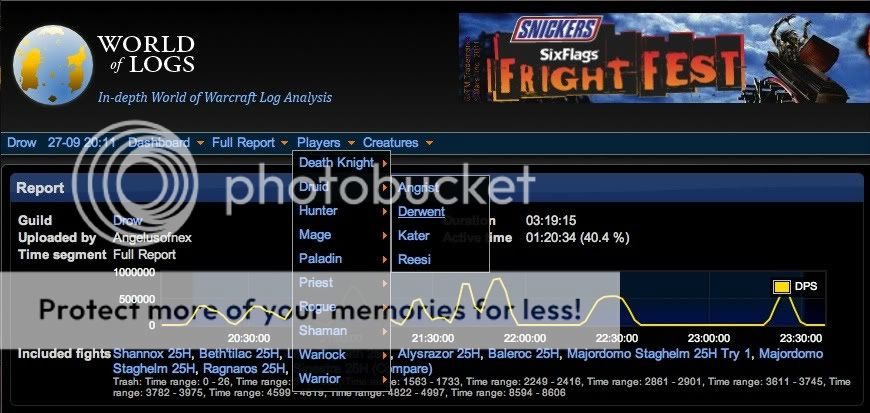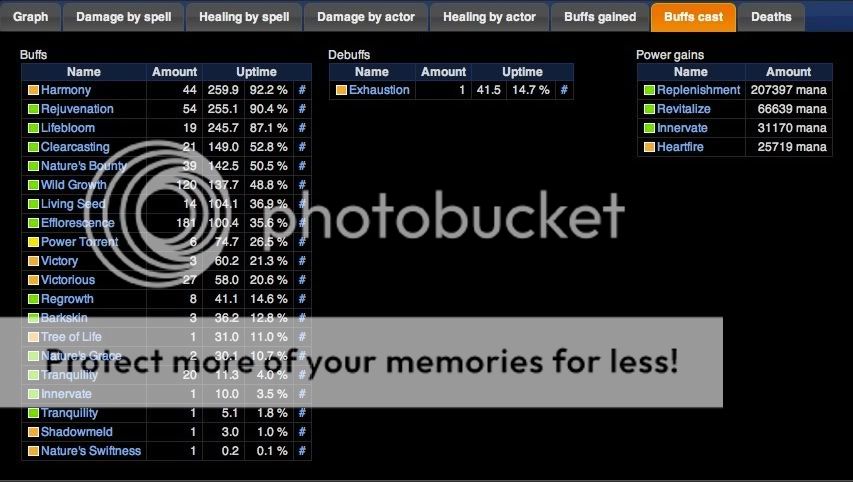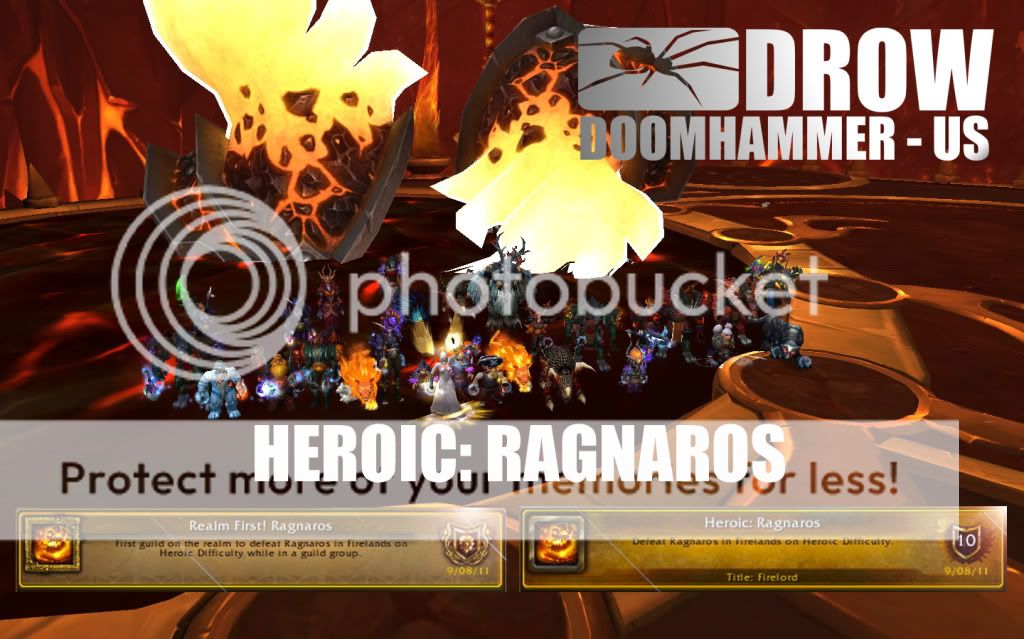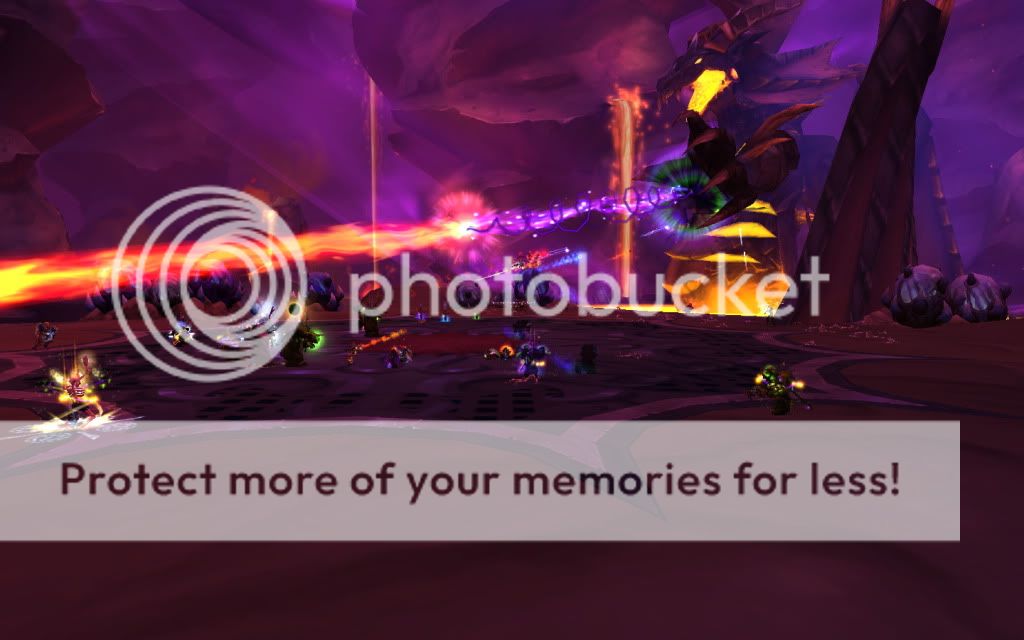 |
| My doodle of how I imagine my tree healing :D Inspired by the ever funny Allie Brosh from Hyperbole & a Half |
I wanted to devote a post to Harmony (our Mastery) and Lifebloom as I’ve found many druids (whether mains, offspecs, or alts) were not realising the value of these things, not maintaining good uptime on them, or both. These two things are extremely important to druid healing. Lifebloom especially is crucial to our mana regen (from Revitalise procs), to our clearcasting (as, for Resto druids, Lifebloom is our only ability which grants Omen of Clarity for our healing spells), and to our groups, as Lifebloom provides Replenishment for our party or raid.
For anyone wondering what I mean by uptime - uptime is referring to how much the ability or buff is active throughout a fight. So, for a quick example, if you maintain Lifebloom up perfectly through an entire fight, the uptime would be 100%. If you only had it up for half the fight, it would be 50%.
Ideally, both Lifebloom and Harmony will have an uptime of 100%. In actuality, it will vary a little bit; for example, on the Alysrazor encounter, when Alysrazor crash lands there is no damage going out until she takes off again. Healers in this period are all DPSing both to help damage her and also for the mana return from DPSing her in this phase. During that period you won’t be maintaining Lifebloom or Harmony as you’ll be busy DPSing. The end uptime percentage on these abilities for that fight will be below 100% as it simply isn’t in the mechanics of the fight. Now, compare that fight to, say, Baleroc, where the primary healing is all big direct heals on the tanks and Shards of Torment soakers. This is a fight where it’s pretty easy to get 98%+ uptime on both Lifebloom and Harmony.
Keeping context of the specific fights in mind, a practical uptime for both Lifebloom and Harmony should be between 80% and 100%. You should always aim to be as close to 100% as possible.
Harmony
Harmony, the Resto Mastery: Your direct healing is increased by an additional x% and casting your direct healing spells grants you an additional x% bonus to your periodic healing for 10 seconds.
Your direct healing spells (Nourish, Healing Touch, Regrowth, and Swiftmend) proc a buff called Harmony - this buff lasts for 10 seconds and boosts your HoTs by x% (based on how much mastery you have).
This is extremely important to maintain as it strengthens your HoTs. This is especially important while raid healing - many druids simply fall into the Rejuv, Rejuv, Rejuv, Wild Growth! spam while raid healing and forget about their direct heals entirely, or just think that because they’re on raid they shouldn’t use any other spells. Unfortunately this results in you gimping your own HoTs (as well as wasting an arsenal of useful healing spells). If that buff isn’t active, your HoTs have no benefit from your Mastery (and yes, that buff needs to be active before you cast the HoTs). Harmony needs to be active for your HoTs to be as strong as possible.
As I mentioned above, fights like Baleroc or Shannox with a lot of single-target healing focus are a bit easier to maintain good Harmony uptime. Fights with heavier raid damage such as Beth’tilac or Lord Rhyolith tend to be more difficult to maintain good uptimes for as you have to balance weaving in your direct heals with your raid healing.
Swiftmend counts as a direct heal and will proc Harmony, so if you’re really pressed to maintain the buff you can use Swiftmends to help activate the buff and, while SM is still on cooldown, through in a quick Nourish, Healing Touch, or Regrowth to keep Harmony active until SM is ready to use again.
5 man dungeons are probably the easiest place to maintain good Harmony (and Lifebloom) uptimes, as there’s plenty of direct healing to do on the tank (and sometimes on the DPS as well!). You can easily keep it active even when the tank isn’t taking much (or any) damage - simply toss a Nourish on him; it will refresh your Lifebloom stack and activate Harmony for next to no mana cost.
Using Nourish to activate Harmony and refresh Lifebloom is also a great thing to do pre-pull, whether in 5 mans or in raids. The mana cost is negligible and both the Replenishment and Revitalize procs from your Lifebloom will restore the mana quickly. It ensures you go into the start of the fight with Harmony active (which is especially helpful if AoE damage starts right away, so you can spread some HoTs immediately).
Lifebloom
Lifebloom! Lifebloom is one of our most important spells. It is crucial to keep Lifebloom up whether you’re healing a 5 man dungeon, a 10 or 25 man raid, a heroic raid, or PvP.
Lifebloom in Cataclysm plays a central role in our mana regen and management as well as being a healing tool.
Lifebloom procs Revitalize, which grants us mana.
Lifebloom procs Revitalize, which grants us mana.
Lifebloom also is the ONLY way to get Omen of Clarity procs for healing. None of our other healing spells will proc OoC/Clearcasting. We have to spec into Malfurion’s Gift in order to enable our Lifeblooms to provide OoC. If your Lifebloom uptime is low, you won’t have as many clearcasting procs from Omen of Clarity, which means you won’t be able to cast spells with no mana cost. This will seriously hamper your mana over the course of a fight!
Lifebloom also supplies Replenishment for you and your party or raid - Replenishment grants up to 10 party or raid members mana regeneration equal to 1% of their maximum mana per 10 seconds. This is important both for you and your group! Replenishment helps your fellow healers and your casters. This also makes maintaining Lifebloom even more important in 10 and 25 man raids if you only have a few classes in your group who can provide Replenishment. if you are the only person in your 10 man group who can provide Replenishment and your Lifebloom uptime (and hence, Replenishment procs) is low, you are severely limiting Replenishment for your fellow raiders. Similarly in a 25 man group, if there are only a few of you providing Replenishment, you can be preventing your fellow raiders from having Replenishment, as each class’ replenishment only affects up to 10 people. So a Resto druid could provide Replen for an entire 10 man raid but you would need 2 or 3 Replen providers to cover a 25 man raid (possibly only 2 as your non-mana users won’t need it).
Lifebloom tends to be a bit easier for people to maintain than Harmony, as most seem secure with having to maintain a stack of 3 on their tank. It can also be refreshed quickly if needed by simply recasting it on the tank, though it’s best to refresh it with at least a Nourish (if not Regrowth or Healing Touch) when you can while raid healing so that you activate Harmony as well.
It’s also good to get into the habit of always having Lifebloom up, and 5 mans is a great place to practice it - always keep it up, even through all the trash! Some may be surprised to hear me suggest that, but I’ve seen many druids in 5 mans only putting Lifebloom on their tank on boss fights. Keeping Lifebloom up and maintaining it, even just with lots of Nourish casts when your tank is taking little to no damage, will go a long way in helping ingrain the habit of keeping it up. It will also keep your tank topped off, especially with the Nourish casts in between heavier damage portions (and will keep Harmony active!). The Replen and Revitalize procs will also help restore your mana between trash pulls and bosses, so less time spent drinking!
Again, as suggested in the Harmony section, it’s good to get your 3 stack of Lifebloom up pre-pull, and just refresh it into the pull with Nourish to proc Harmony. Also, if you’re lucky enough to get Dark Intent, your warlock will love you as all the Lifebloom ticks will give him a full 3-stack of his Dark Intent buff pre-pull!
I should also note: Maintaining Lifebloom is absolutely crucial as I’ve mentioned. There are times, however, when you may be unable to stack Lifebloom on your tank - you may be positioned out of range, for example. In cases like this, stack Lifebloom either on yourself or on another suitable target (if you’re focussing a specific DPS, perhaps a broodling soaker on Beth’tilac, you could stack Lifebloom on them). You can always move the stack back to the tanks when you’re back in range. You absolutely must keep Lifebloom up at all times though.
Analyzing Logs: Harmony and Lifebloom
Logs are the best place to see how you’re doing in terms of maintaining good Lifebloom and Harmony uptime. Whether you’re looking to improve on your own healing, evaluating a new app for your guild, or helping a friend, Logs are extremely helpful all around for analysing your healing.
World of Logs is where tons of Logs are uploaded by guilds for analysis. It can be a bit confusing at first if you’re not familiar with it, so here’s how to navigate to the information we’re looking for. With pictures! You may have to click the screenshots to get a better view.
Here’s a log for one of our nights last week. This is the Dashboard page, where you’ll be brought to first when selecting a night’s logs. To look at a specific player, use the drop-down menus: Here I’ve gone to Players > Druid > Derwent.
For looking at Lifebloom and Harmony uptimes in particular, you should really look only at Boss fights during raids. Looking at the full report can really skew the data - the person you’re looking at might have been AFK or outside the instance during some of the trash mobs, or they might have been DPSing for some of the fights, or perhaps were swapped out for another raid member for some fights. It’s best to look either at Bosses (to include all of them) or to go to specific bosses and look at them one by one. The time in parenthesis by each boss name is the length of the kill, and an arrow off of any bosses will show multiple attempts/wipes on that boss if it wasn’t killed the first time.
Here I’ve gone to Full Report > Bosses > Ragnaros 25H.
Once you’ve gotten to a specific player and a specific boss, you can then go through the tabs to get more information. For Harmony and Lifebloom in particular, it’s best to look at Buffs Cast. This will bring up the following screen:
On the left are the Buffs I cast throughout the fight. You can see Mark of the Wild up at the top at 100% uptime - a static buff of course on the entire raid throughout the fight. Next up is Lifebloom, up at 87.2%, and Harmony at 82.6%. Could be higher, particularly my Harmony which I’ve maintained higher in our other kills, but still good and realistic given some of my other duties in the fight (I do meteor knockbacks in phase 3, Stampeding Roar in phase 2, plus the brief RP time before phase 4). Context is of course important, but you’re still always shooting for that ideal of 100% uptime.
For interest’s sake, we can scan down the rest of the Buffs there. My Power Torrent procced 16 times throughout the fight, giving it a 25.5% uptime. I had 27 Clearcasting procs throughout the fight from my good Lifebloom uptime. I used Tree of Life 3 times, Barkskin 8 times, Innervated myself 4 times. I used Cat Form 3 times along with 3 Nature’s Swiftness casts, and I even Shadowmelded once! (It tends to help me avoid aggro from the scion spawn in the second intermission).
Moving to the right, you can see my Debuffs cast - Exhaustion from Heroism, I cast Moonfires on the Meteors I was knocking back, and Concentration from a Concentration Pot.
Moving to the right once more, you can see Power Gains - this is the mana I gained throughout the fight. Reviltalize and Innervate gave me back the most mana. Heartfire is the Resto t12 2-piece bonus, which is a pretty good mana return throughout the course of a fight. Replenishment there is how much my Replenishment provided to the raid - to see how much you yourself gained from Replenishment, simply click the Buffs Gained tab, shown below, in which you can see the mana gained from Replen (and also from a Concentration pot).
That all is also looking at a fight which was 12 minutes long - some numbers will be lower for shorter fights.
Some Examples
Here are just a few more examples of some logs looking at Harmony and Lifebloom uptimes.
The following log is one from a Baleroc kill. As I mentioned earlier, because of all the
direct healing required in this fight, this is a much easier fight to maintain near-perfect Lifebloom and Harmony uptime. You can see there’s a 98% uptime for Lifebloom and 96.6% uptime for Harmony.
I also found the following two logs from kills of Lord Rhyolith - both kills were about 4:40 in length. This is a good comparison of the same encounter, the same length of time, and the effects of high and low Lifebloom uptime in particular.
If you look at this first log, you can see Harmony uptime is up at 92.2% and Lifebloom uptime is up at 87.1%, good. If you look just below that you can see Clearcasting (Omen of Clarity) procs: 21! If you look over to the right for Power Gains, you can see Revitalize restored 66,639 mana.
If we compare that with the following log, you can see Harmony uptime in this log is low at 49.5%, and Lifebloom is only at 31.4% uptime. This also resulted in significantly lower Clearcasting procs - only 8! That can really add up over the course of a fight. If you look to the right, you can see their Revitalize only provided 49,874 mana. While that’s not too low (Rejuvenation also procs Revitalize, which helps there, and the size of each druid's mana pool does factor in as well), that’s still a disparity of 16,765 mana.
So as you can see, good Lifebloom uptime is really important for mana as well as healing!
I’ve certainly rattled on enough, so I think I'll wrap it up here. Remember, good Harmony and Lifebloom uptime is important and, as ever, practice makes perfect! Don't be discouraged if you're a bit low to start with - just keep working at it and it will improve.
A good tracker for Harmony and Lifebloom can also go a long way! I have some useful Power Auras for keeping an eye on those (full details in my My User Interface / Addons post!) which may be of help to you - the Harmony one in particular displays when the buff is active and has a timer to show you how long is left on it. Many of you likely have some means of watching your HoTs on targets to keep an eye on your Lifebloom, but if you like you can also use the little power aura to show you when your Lifebloom is active as well (this aura does NOT show stacks or timer for Lifebloom, though).
Harmony Power Aura:
Version:4.22; b:0.0549; g:0.4863; icon:Spell_Nature_HealingWay; buffname:Harmony; r:0.1843; x:-85; customname:Harmony; texture:23; alpha:1; inVehicle:0; wowtex:true; combat:true; size:0.25; y:-160; texmode:1; ismounted:0; timer.b:0.9294; timer.h:2; timer.Texture:WhiteRabbit; timer.enabled:true; timer.r:0.9882; timer.cents:false; timer.Relative:CENTER; timer.UseOwnColor:true
Lifebloom Power Aura:
Version:4.22; icon:INV_Misc_Herb_Felblossom; buffname:Lifebloom; x:-45; customname:Lifebloom; alpha:1; mine:true; inVehicle:0; groupOrSelf:true; customtex:true; combat:true; size:0.1; y:-115; ismounted:0
Simply copy, open up Power Auras, hit 'Import' and paste the code into the import bar!
Happy healing!











